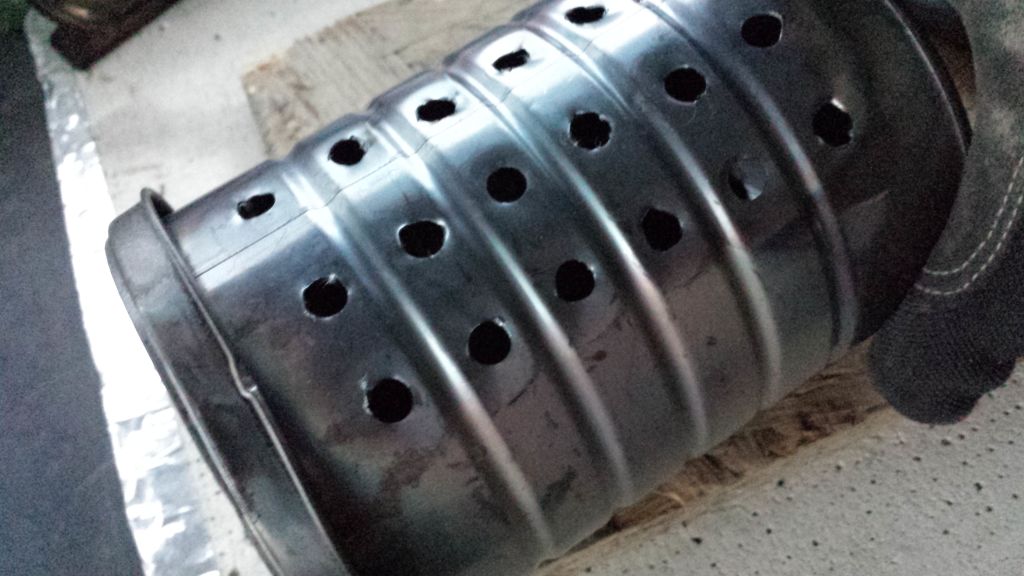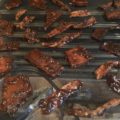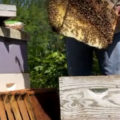First, let’s make clear distinction between cold- and hot-smoking. Hot-smoking is the most common method of smoking meat. The chamber is usually between 300 degrees F or higher. Cold-smoking is keeping the chamber cooler then 85 degrees F. There are subtle variations (and opinions) depending on what you are trying to do. Cold-smoking allows the smoke to penetrate deeper inside the meat but takes more time (hours) than hot-smoking. Hot-smoking will harden the casing, sealing up the pores in the casing and keeping smoke out. In cold-smoking, we want to keep the casing soft and prevent it from drying out. We do this by reducing the heat… to a temperature that is a little warmer than room-temperature. In cold-smoking, it is not our goal to cook the meat, but to smoke it… keeping the cooking chamber as cool as possible.

There are various cold-smoking techniques, including smokers that have the firebox in a totally separate chamber, only pulling in the smoke to cure the meat. Because the meat is not cooking, we will usually have a salt or cure in the meat so that it prevents bacteria from forming during the long hours of raw meat sitting close to room temperature. That’s a brief overview of the processes, and it’s well-documented everywhere.
When we’ve decided to cold-smoke, we quickly realize that the lowest setting on our hot-smoker is already way over the temperature that we need. So, we have to improvise by creating a cold smoke generator. Here again, there are many options. You can buy them (I also own an A-Maz-N Pellet Smoker and find it pretty awesome), or make them yourself. Here is a quick way to build a cold-smoke generator out of items you may have lying around.
I found a medium-sized coffee can, and took the label off. I used a blow torch and gloves to burn the inside and outside of the can really good. Cans today can have BPA lining the inside of the can, and possible paint or other contaminates on the outside. The idea it to heat up the can in and out. I got it glowing red-hot all around before calling it done. I did the same to a make-shift lid that closely fit the can.
Next, I drilled holes as shown along the top of the can. Note, after using this a few times, I have a few modifications that I’m making that I’ll list below. I found an old soldering iron that was lying around. You can buy a cheap soldering iron that has a little less girth, but since I don’t use this one I had for anything, why not? For the typical soldering iron, you can remove the tip. You only need the heat from the shaft of the iron, and you certainly don’t want the soldering on the tip burning in your can. Make sure there’s no solder on the shaft as well.
I put one hole in the back of the can, and lower down (the can will be laying on its side, but I have also seen ones that sit upright and have the iron coming in from the side. Then, I drilled a few lines of holes along the top of the can for the smoke to get out. Plug it in, add your chips, and place in a chamber that will hold the smoke for your product.
Looking back, these are the modifications I plan to make.
First, I think there should have been far fewer holes… and possibly even smaller. The reason is because when I plug in the soldering iron, it burns through dry wood chips in about 1 to 1.5 hours. So, I have to reload the chips once or twice to get through the standard job. Soaking the chips ahead of time can slow the burning temporarily. If we reduce the air-flow inside the can, it seems we should be able to slow the burning more. Last, reducing the heat of the soldering iron using a rheostat could also allow us to burn the wood chips slower…. and of course… cooler.
UPDATE: I’ve found even a better way by doing nothing. I can pull my soldering iron out of the cane once it’s going. Then, I can reload new chips in with the ones that have turned to coals. It fires right back up and I no longer need the iron. The iron is only used to start the smoker, then pulled out. Works great!









[…] of a cold smoke generator as it would be difficult to keep your hot smoker under 100 degrees F. I made this cold-smoking device and I use it in my hot […]